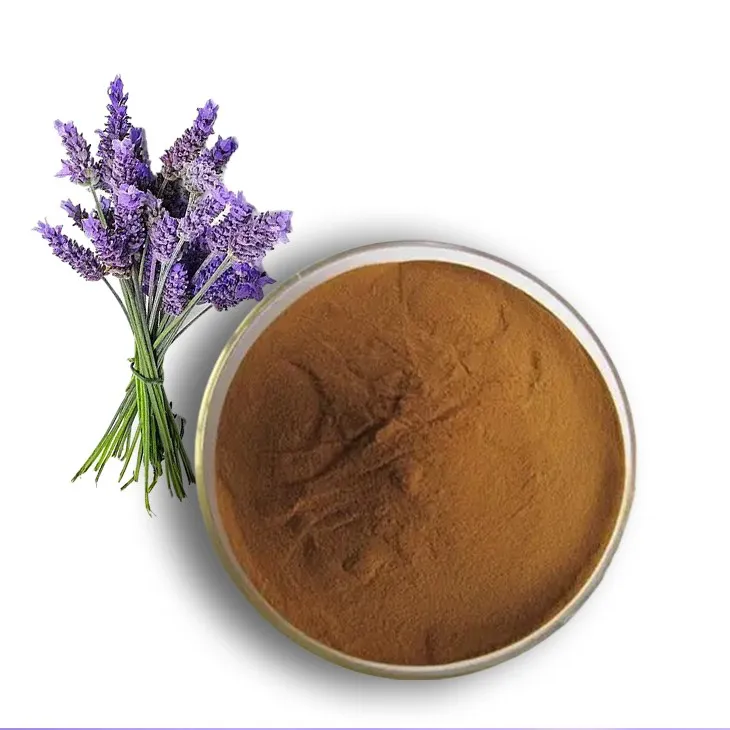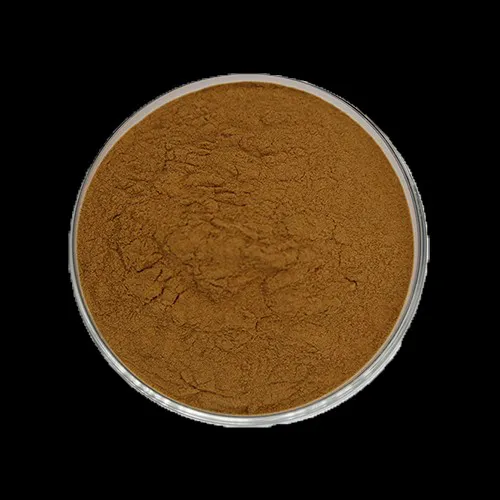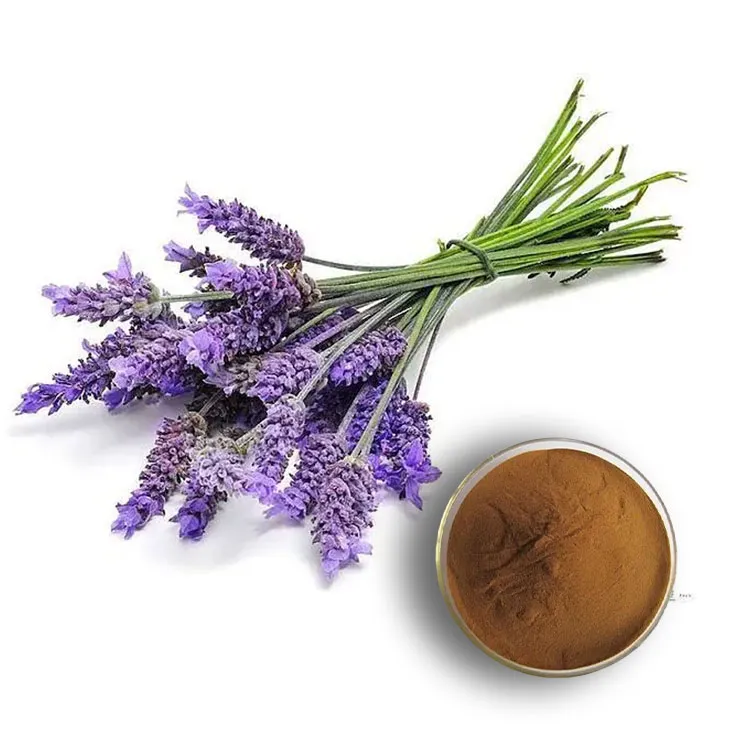- 0086-571-85302990
- sales@greenskybio.com
The process of extracting lavandulol from lavender extract.
2024-11-29

1. Introduction
Lavender, a well - known and widely - used plant, has a rich chemical composition. Among its components, lavandulol is a highly valuable substance. Lavandulol has a pleasant aroma and is widely used in various industries such as the fragrance, food flavoring, and wellness industries. Extracting lavandulol from Lavender Extract is a crucial process for the full utilization of lavender resources. This article will discuss in detail the process of extracting lavandulol from Lavender Extract.

2. Preparation of Lavender Extract
2.1 Drying of lavender
The first step in preparing the lavender extract is drying the lavender. This is an important process as it helps to remove moisture from the plant material. There are different methods of drying lavender, such as air drying and oven drying. Air drying is a natural method where the lavender is spread out in a well - ventilated area. This method is relatively slow but can preserve the natural properties of the lavender better. On the other hand, oven drying is a faster method. However, care must be taken to control the temperature to avoid overheating the lavender, which may cause the loss of some volatile components.
2.2 Grinding of lavender
After drying, the lavender needs to be ground into a fine powder. Grinding helps to increase the surface area of the lavender, which is beneficial for the subsequent extraction process. The grinding process should be carried out carefully to ensure that the lavender is ground evenly. A grinder with appropriate settings should be used to achieve the desired particle size. Too coarse a powder may result in incomplete extraction, while too fine a powder may cause problems such as clogging during the extraction process.
3. Extraction technologies
3.1 Microwave - assisted extraction
One of the modern extraction technologies that can be used in the extraction of lavandulol from lavender extract is microwave - assisted extraction. This technology utilizes microwaves to heat the extraction solvent and the lavender sample simultaneously. The microwaves cause the molecules in the sample and the solvent to vibrate rapidly, which enhances the mass transfer of the components from the lavender into the solvent. This results in a faster extraction process compared to traditional extraction methods.- Advantages:
- It significantly reduces the extraction time.
- It can improve the extraction efficiency, leading to a higher yield of lavandulol.
- It is a relatively clean and environmentally friendly extraction method.
- Disadvantages:
- The equipment for microwave - assisted extraction can be relatively expensive.
- Proper control of the microwave power and extraction time is crucial, otherwise, it may lead to the degradation of some components.
3.2 Other extraction methods
In addition to microwave - assisted extraction, there are other extraction methods that can be used for lavender extract. For example, solvent extraction is a traditional method. In this method, a suitable solvent such as ethanol or hexane is used to extract the components from the lavender. The choice of solvent depends on the solubility of the target compound (lavandulol) and the nature of the other components in the lavender. Another method is supercritical fluid extraction. Supercritical carbon dioxide is often used as the supercritical fluid. This method has the advantages of being non - toxic, non - flammable, and having a high diffusivity. However, it also requires relatively expensive equipment and strict operating conditions.
4. Separation and purification methods
4.1 Centrifugation
After the initial extraction, the extract contains not only lavandulol but also other impurities. Centrifugation is one of the methods used to remove these impurities. In centrifugation, the extract is placed in a centrifuge tube and spun at a high speed. Due to the difference in density between the components, the heavier impurities will sediment at the bottom of the tube, while the supernatant containing lavandulol can be collected for further processing.- Factors affecting centrifugation:
- The speed of the centrifuge: A higher speed generally results in better separation, but it may also cause some damage to the components if the speed is too high.
- The time of centrifugation: Longer centrifugation time can improve the separation efficiency, but it also needs to be balanced to avoid excessive energy consumption.
4.2 Membrane separation technology
After centrifugation, membrane separation technology can be employed to precisely isolate lavandulol. Membranes with different pore sizes can be used to separate different components based on their molecular size. For example, ultrafiltration membranes can be used to retain larger molecules and allow smaller molecules such as lavandulol to pass through. This method has the advantages of high selectivity, low energy consumption, and being able to operate at room temperature.- Types of membrane separation:
- Microfiltration: Used for the separation of larger particles and microorganisms.
- Ultrafiltration: As mentioned above, mainly used for the separation of macromolecules and small molecules.
- Nanofiltration: Can be used to separate small ions and small molecules with different charges.
5. Conclusion
The extraction of lavandulol from lavender extract is a complex but important process. The proper preparation of lavender extract, the choice of appropriate extraction technologies, and the effective use of separation and purification methods are all crucial steps in obtaining high - quality lavandulol. With the development of modern technology, more efficient and environmentally friendly extraction and purification methods are expected to be developed in the future, which will further promote the utilization of lavender resources in various industries.
FAQ:
1. What is the first step in extracting lavandulol from lavender extract?
The first step is to carefully prepare the lavender extract, which involves proper drying and grinding of lavender to obtain a homogeneous extract.
2. Why is modern extraction technology important in this process?
Modern extraction technologies are essential because, for example, microwave - assisted extraction can speed up the extraction process by enhancing the mass transfer of components.
3. Which methods are used for separation and purification?
Centrifugation can be used to remove impurities, and then membrane separation technology can be employed to precisely isolate lavandulol.
4. What are the applications of the final product, lavandulol?
The final product, lavandulol, is highly valued in the fragrance, food flavoring, and wellness industries.
5. Are there any other extraction technologies that can be used?
There may be other extraction technologies available, but in this process, microwave - assisted extraction is mentioned as a useful one. However, research may be ongoing to explore other potential extraction techniques.
Related literature
- Extraction and Characterization of Lavender Essential Oil Components"
- "Advanced Techniques for Lavender - Derived Compound Isolation"
- "Optimizing the Lavandulol Extraction from Lavender Extract: A Review"
- ▶ Hesperidin
- ▶ citrus bioflavonoids
- ▶ plant extract
- ▶ lycopene
- ▶ Diosmin
- ▶ Grape seed extract
- ▶ Sea buckthorn Juice Powder
- ▶ Beetroot powder
- ▶ Hops Extract
- ▶ Artichoke Extract
- ▶ Reishi mushroom extract
- ▶ Astaxanthin
- ▶ Green Tea Extract
- ▶ Curcumin Extract
- ▶ Horse Chestnut Extract
- ▶ Other Problems
- ▶ Boswellia Serrata Extract
- ▶ Resveratrol Extract
- ▶ Marigold Extract
- ▶ Grape Leaf Extract
- ▶ blog3
- ▶ blog4
-
Chinese Bitter Melon Extract Suppliers.
2024-11-29
-
Suppliers of Organic Vitamin C Powder.
2024-11-29
-
Organic non - GMO Vitamin B6.
2024-11-29
-
Standard - process fig extract.
2024-11-29
-
China L - Theanine powder factory.
2024-11-29
-
Chinese Lily Extract Factories.
2024-11-29
-
Shikonin
2024-11-29
-
Medicinal Marshmallow Extract
2024-11-29
-
Agaricus Blazei Extract
2024-11-29
-
Sea buckthorn oil
2024-11-29
-
Aminolevulinic acid
2024-11-29
-
Motherwort Extract
2024-11-29
-
Bamboo Leaf extract
2024-11-29
-
Troxerutin
2024-11-29
-
Cocoa Extract
2024-11-29
-
Apricot Powder
2024-11-29





















